Mirjam Ernestus
A corpus-based investigation of pitch contours of monosyllabic words in conversational Taiwan Mandarin
Sep 12, 2024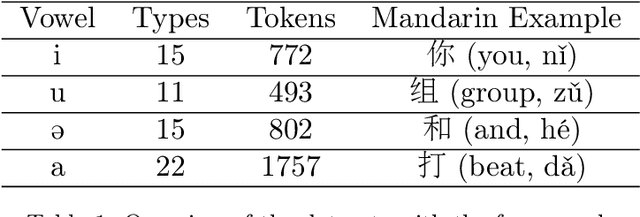
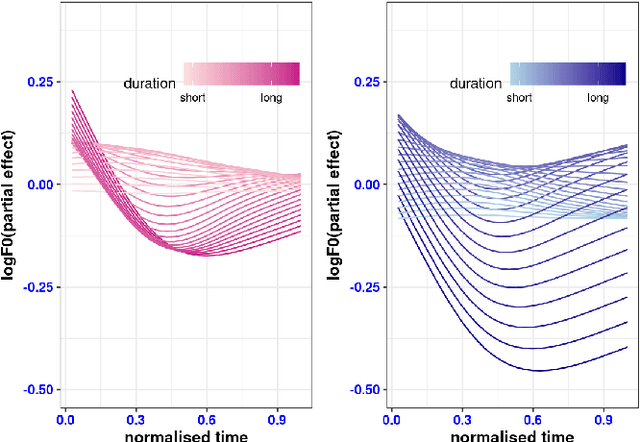
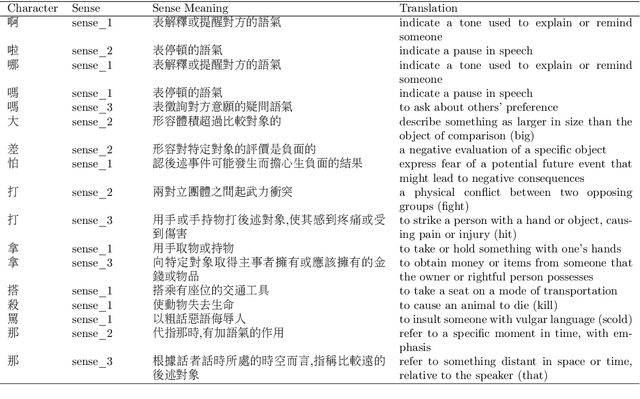
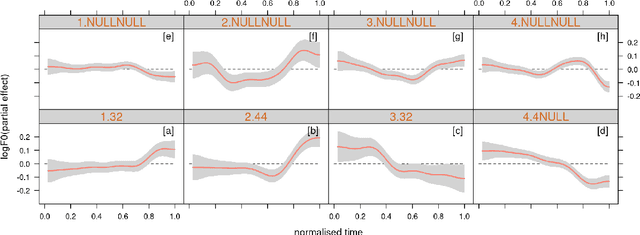
Abstract:In Mandarin, the tonal contours of monosyllabic words produced in isolation or in careful speech are characterized by four lexical tones: a high-level tone (T1), a rising tone (T2), a dipping tone (T3) and a falling tone (T4). However, in spontaneous speech, the actual tonal realization of monosyllabic words can deviate significantly from these canonical tones due to intra-syllabic co-articulation and inter-syllabic co-articulation with adjacent tones. In addition, Chuang et al. (2024) recently reported that the tonal contours of disyllabic Mandarin words with T2-T4 tone pattern are co-determined by their meanings. Following up on their research, we present a corpus-based investigation of how the pitch contours of monosyllabic words are realized in spontaneous conversational Mandarin, focusing on the effects of contextual predictors on the one hand, and the way in words' meanings co-determine pitch contours on the other hand. We analyze the F0 contours of 3824 tokens of 63 different word types in a spontaneous Taiwan Mandarin corpus, using the generalized additive (mixed) model to decompose a given observed pitch contour into a set of component pitch contours. We show that the tonal context substantially modify a word's canonical tone. Once the effect of tonal context is controlled for, T2 and T3 emerge as low flat tones, contrasting with T1 as a high tone, and with T4 as a high-to-mid falling tone. The neutral tone (T0), which in standard descriptions, is realized based on the preceding tone, emerges as a low tone in its own right, modified by the other predictors in the same way as the standard tones T1, T2, T3, and T4. We also show that word, and even more so, word sense, co-determine words' F0 contours. Analyses of variable importance using random forests further supported the substantial effect of tonal context and an effect of word sense.
Modelling word learning and recognition using visually grounded speech
Mar 14, 2022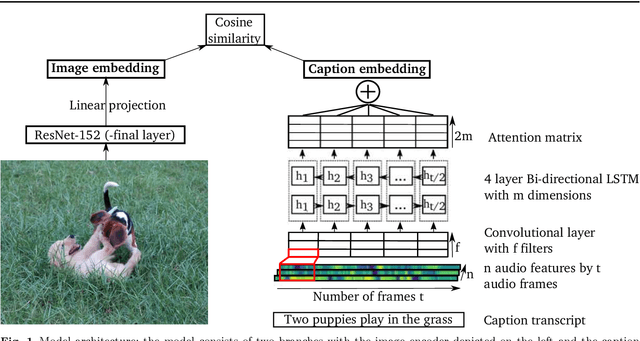
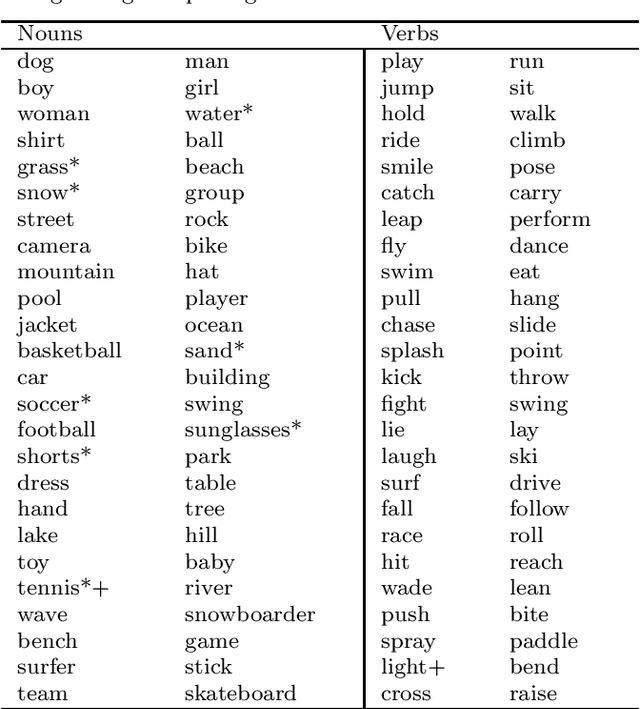
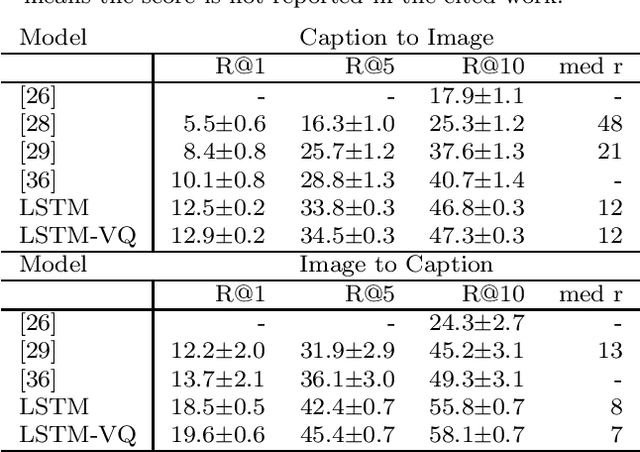
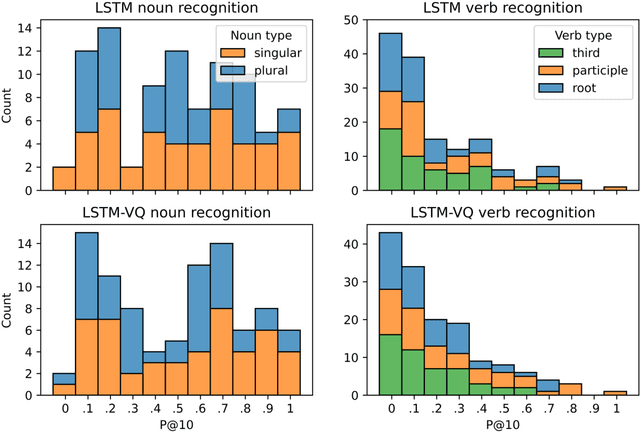
Abstract:Background: Computational models of speech recognition often assume that the set of target words is already given. This implies that these models do not learn to recognise speech from scratch without prior knowledge and explicit supervision. Visually grounded speech models learn to recognise speech without prior knowledge by exploiting statistical dependencies between spoken and visual input. While it has previously been shown that visually grounded speech models learn to recognise the presence of words in the input, we explicitly investigate such a model as a model of human speech recognition. Methods: We investigate the time-course of word recognition as simulated by the model using a gating paradigm to test whether its recognition is affected by well-known word-competition effects in human speech processing. We furthermore investigate whether vector quantisation, a technique for discrete representation learning, aids the model in the discovery and recognition of words. Results/Conclusion: Our experiments show that the model is able to recognise nouns in isolation and even learns to properly differentiate between plural and singular nouns. We also find that recognition is influenced by word competition from the word-initial cohort and neighbourhood density, mirroring word competition effects in human speech comprehension. Lastly, we find no evidence that vector quantisation is helpful in discovering and recognising words. Our gating experiments even show that the vector quantised model requires more of the input sequence for correct recognition.
Seeing the advantage: visually grounding word embeddings to better capture human semantic knowledge
Feb 21, 2022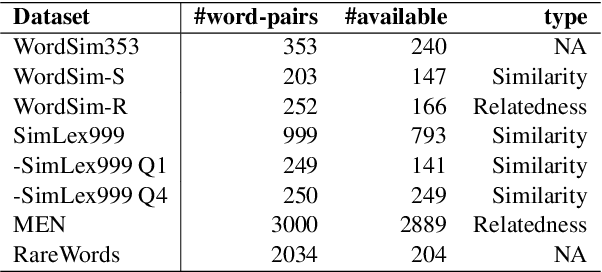
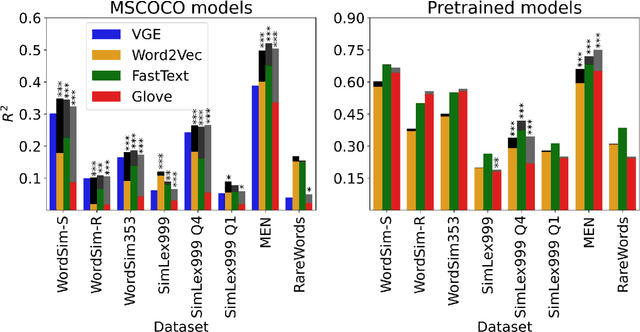
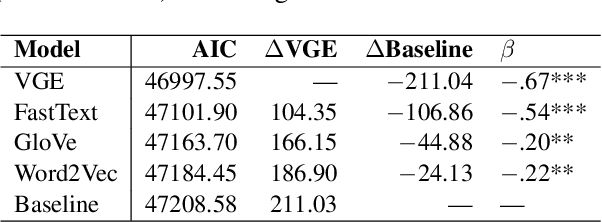

Abstract:Distributional semantic models capture word-level meaning that is useful in many natural language processing tasks and have even been shown to capture cognitive aspects of word meaning. The majority of these models are purely text based, even though the human sensory experience is much richer. In this paper we create visually grounded word embeddings by combining English text and images and compare them to popular text-based methods, to see if visual information allows our model to better capture cognitive aspects of word meaning. Our analysis shows that visually grounded embedding similarities are more predictive of the human reaction times in a large priming experiment than the purely text-based embeddings. The visually grounded embeddings also correlate well with human word similarity ratings. Importantly, in both experiments we show that the grounded embeddings account for a unique portion of explained variance, even when we include text-based embeddings trained on huge corpora. This shows that visual grounding allows our model to capture information that cannot be extracted using text as the only source of information.
Semantic sentence similarity: size does not always matter
Jun 16, 2021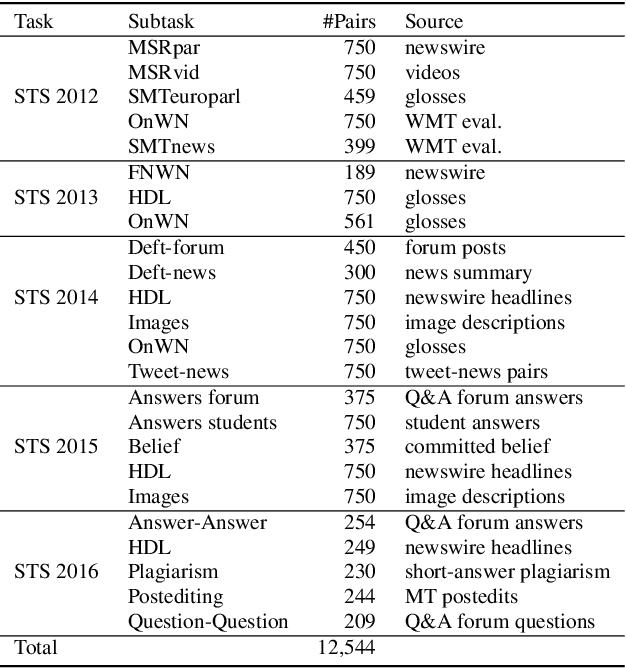


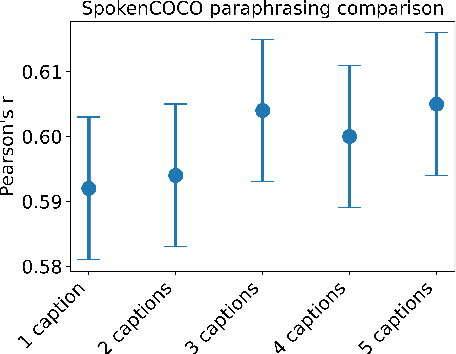
Abstract:This study addresses the question whether visually grounded speech recognition (VGS) models learn to capture sentence semantics without access to any prior linguistic knowledge. We produce synthetic and natural spoken versions of a well known semantic textual similarity database and show that our VGS model produces embeddings that correlate well with human semantic similarity judgements. Our results show that a model trained on a small image-caption database outperforms two models trained on much larger databases, indicating that database size is not all that matters. We also investigate the importance of having multiple captions per image and find that this is indeed helpful even if the total number of images is lower, suggesting that paraphrasing is a valuable learning signal. While the general trend in the field is to create ever larger datasets to train models on, our findings indicate other characteristics of the database can just as important important.
Language learning using Speech to Image retrieval
Sep 09, 2019
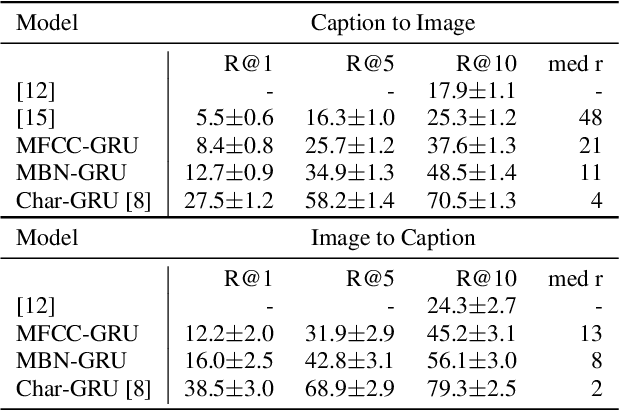


Abstract:Humans learn language by interaction with their environment and listening to other humans. It should also be possible for computational models to learn language directly from speech but so far most approaches require text. We improve on existing neural network approaches to create visually grounded embeddings for spoken utterances. Using a combination of a multi-layer GRU, importance sampling, cyclic learning rates, ensembling and vectorial self-attention our results show a remarkable increase in image-caption retrieval performance over previous work. Furthermore, we investigate which layers in the model learn to recognise words in the input. We find that deeper network layers are better at encoding word presence, although the final layer has slightly lower performance. This shows that our visually grounded sentence encoder learns to recognise words from the input even though it is not explicitly trained for word recognition.
 Add to Chrome
Add to Chrome Add to Firefox
Add to Firefox Add to Edge
Add to Edge